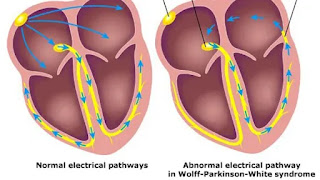The paranormal trencadís
Hello and welcome back:
If you are an art enthusiast, or if you simply remember your school days, you are surely familiar with the concept of collage; collage is an artistic technique that consists of pasting different cut-out images on a canvas or paper. The term is applied above all to painting, but by extension it can refer to any other artistic manifestation, such as music, film, literature or music videos.
In painting, a collage can be composed entirely or only in part of photographs, wood, newspapers, magazines, everyday objects, posters, etc.
But if there is a wonderful example of what a collage is, it is undoubtedly trencadís. If you don't know it (although I think you do), allow me to explain it to you: this term comes from a Catalan word that means "chopped" or "cut up", and basically consists of making different designs with pieces of tiles.
This type of ornamentation is typical and characteristic of Catalan modernist architecture and Valencian modernism. The genius of this type of art (because it really is art) is the greatest figure of Catalan modernism, Antoni Gaudi. But I'm sure you might be thinking that we are going to talk about the paranormal side of the great Catalan architect and artist. Well, I'm sorry to disappoint you, because that is not the case.
Let's go back to the concept of collage: the basics of collage is that it takes pieces with certain information that initially have nothing to do with the final message that is intended to be given or achieved, and when these unconnected or meaningless units of information are joined together, they reach a new threshold of significance.
Now we are going to take a turn and comment on one of the aspects that currently present the most controversy in the field of recording sounds of possible paranormal origin. In this case, we are all clear about the direct recording of what some call psychophonies and others psychophonic inclusions already present doubts both in the interpretation and in their recording mechanism, subject to constant doubts about the non-paranormal origin of the same.
But there is another type of research related to the subject of the possible recording of voices from beyond, which is what is called Instrumental Transcommunication. Within this field there are many researchers, and like any field of paranormal research, it has the same number of detractors and critics. But there is a certain criticism that I would like us to address: and it is that which claims that the records obtained through instrumental transcommunication techniques are nothing more than spurious recordings, that is, that the inclusions obtained are nothing more than parts of other radio broadcasts and that these broadcasts are due to chance, without there being any intention in their recording or recording beyond pure luck.
But if you allow me now, we will cross-reference the two aspects, that is, the initial aspect of the collage and that of the trencadís, and you will allow me to assume that it is indeed true, as the criticism of this type of research indicates: they are parts, pieces of radio emissions or of any other type that are recorded, but at the same time, in the same way as the trencadís, there is an external cause that “organizes” these unconnected pieces of information, which when joined together acquire a new meaning: that is, the external cause (or internal if we are talking about the Super-Psi hypothesis) is capable of “handling” this type of inclusions, forming, in a way analogous to what Gaudí did, a paranormal trencadís, in such a way that each individual piece that in itself lacks meaning, achieves a new clear and defined meaning.
I'm sure you have many criticisms and observations to make about this approach, and I assure you that I am looking forward to hearing them, so please do not hesitate to comment. Best regards and see you next time.



































